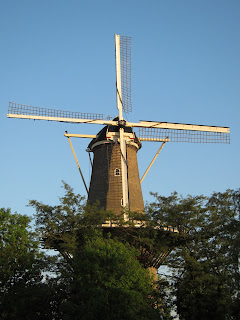Portugal Part 2: Lisbon
Following the short course in infectious disease/paleopathology at the University of Coimbra, I took the train from Coimbra to
Lisbon Tuesday evening for a talk about my research that I was going to give on Wednesday evening. I got to my
hostel in Lisbon later than I had planned (which, by the way I was in a
4-person room, but had it all to myself both nights I was there!), but I still
had time to walk down to the river/ocean and see this beautiful sunset!
 |
| Sunset over the Rio Tejo in Lisbon. |
The next day I met up with Vanessa and her friends (I had
met Vanessa at the American Association of Physical Anthropologists meeting in
Knoxville, TN in April, but had known about her previously because my fellow grad student Christina
had met her on a previous trip to Lisbon).
Vanessa is the one who contacted the Museu Nacional de Arqueologia (National Archaeology Museum) in Lisbon to arrange my talk. We met near the Mosteiro dos Jerónimos (Jerónimos Monastery) which
is actually the building housing the Archaeology Museum-- it was rather an
impressive venue!
 |
| The Mosteiro dos Jerónimos in Lisbon. |
 |
| A wider shot of the Mosteiro dos Jerónimos in Lisbon. |
 |
| Me at the Mosteiro dos Jerónimos in Lisbon. |
Once I met up with Vanessa and her British friend Cheryl, we walked around for a bit to wait for Vanessa's other Portuguese friends. In the meantime, we walked over to the water (Rio Tejo) to see the Padrãodos Descobrimentos (Monument to the Discoveries).
 |
| The Padrão
dos Descobrimentos (Monument to the Discoveries) facing westward, toward the New World, in Lisbon. |
 |
| The Padrão
dos Descobrimentos (Monument to the Discoveries) in Lisbon. |
 |
| Me at the Padrão dos Descobrimentos (Monument to the Discoveries) in Lisbon. |
 |
| Note the mosaics on the ground. According to Vanessa, they're "very Portuguese," still made by hand, and other places in the world fly in the Portuguese craftsmen who make them. |
 |
| The Padrão
dos Descobrimentos (Monument to the Discoveries) in Lisbon. |
 |
| Facing westward from the Padrão
dos Descobrimentos (Monument to the Discoveries) in Lisbon. You can see the Cristo-Rei (Christ the King) statue which was inspired by the statue in Rio de Janeiro. Also pictured is the 25 de Abril Bridge (formerly Salazar Bridge). |
 |
| Here is the Ponte 25 de Abril which I passed on my way to meet up with Vanessa & co., renamed from Ponte Salazar after the Carnation Revolution on April 25, 1974. |
 |
| My Pastéis de Belém and cappuccino. |
After enjoying some pastries, we then meandered back to the water to see some more sights.
 |
Torre de Belém
built in the early 16th century
as part of a defense system and
ceremonial gateway to Lisbon.
|
 |
| Torre de Belém. |
 |
| Torre de Belém. |
And then it was time for my talk. I gave a talk first, followed by a Portuguese
lithic archaeologist, Nuno Bicho (who delivered his talk in Portuguese).
 |
| Giving my talk (about chins, of course) at the Museu Nacional de Arqueologia. Photo courtesy of the GEEvH – Group of Studies in Human Evolution. |
 |
| This is the Museu Nacional de Arqueologia, a part of the Mosteiro dos Jerónimos. |
There were actually a number of Americans at the talk who had just
flown in to Lisbon that day and were going to be doing some archaeological field
work in Portugal. They mostly stayed
awake, which impressed me given the jet lag they must have been dealing with! After the talk I got dinner with Vanessa and
her friends which was a nice way to wrap up my time in Portugal.
I really liked Portugal a lot, but on Thursday morning I
flew to Paris! In Lisbon, I took a taxi to a metro
station and the metro to the airport, and I left my hostel around 6:20 am and
the person who was working was kind enough to get out of bed and walk down the
street with me (in her PJs) to point out the nearest taxi stand (it was really
close, but I’m not sure I would’ve noticed it without her help)! This is just one more example of the kindness
and friendliness I’ve experienced while in Europe thus far!




































